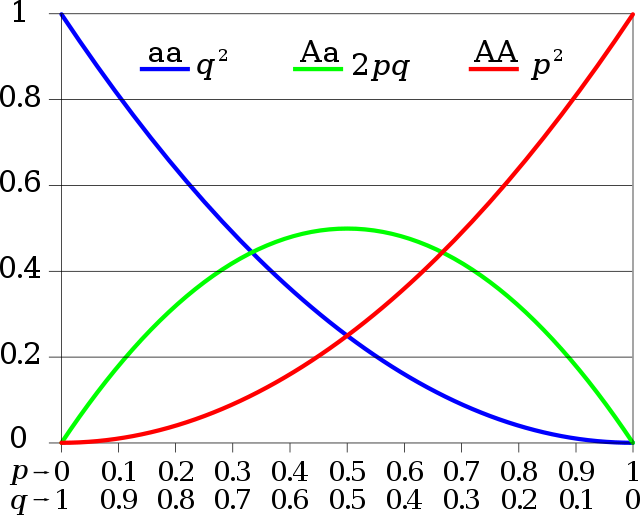Top Qs
Timeline
Chat
Perspective
Prevention of autosomal recessive disorders
From Wikipedia, the free encyclopedia
Remove ads
Prevention of autosomal recessive disorders is focused on making it less likely that two carriers for the same hereditary disease will have children together.
This article needs additional citations for verification. (October 2024) |
Background

Some genetic disorders are caused by having two "bad" copies of a recessive allele. When the gene is located on an autosome (as opposed to a sex chromosome), it is possible for both men and women to be carriers. A child of two carriers has a 1/4 chance of being affected by the disorder.
Due to carriers being unaffected (or barely affected), the bad recessive alleles can persist in the gene pool for quite a while, even if the disorder is 100% lethal.[medical citation needed]
Remove ads
Outbreeding
Most modern societies have laws regarding incest,[1] with avoiding the genetic disorders caused by inbreeding as one of the major motivations.[2]
Both social acceptance and legality of first-cousin marriage is mixed. Some jurisdictions narrowly tailor their laws to preventing inbreeding: in Maine,[3] first cousins can marry with proof of genetic counseling, while in Arizona[4] and several other states, first cousins can marry if they are old or infertile.[5]
Remove ads
Carrier testing
Carrier testing can help guide the decisions of couples who are at high risk, e.g.:
- Both of Jewish descent – Several disorders including Tay–Sachs disease. The organization Dor Yeshorim offers testing in many countries.[citation needed]
- Both Cypriot – Thalassemia. Testing is fully subsidized and mandated in both jurisdictions on Cyprus.[6][failed verification]
- Both Maldivian – Thalassemia. Testing is fully subsidized and mandated in the Maldives.[7]
- Both from affected parts of Africa – Sickle-cell disease. Carrier testing is not widely available in many African countries[8] and disease burden remains high.
Couples who learn that they are both carriers may decide to part ways, adopt, or use preimplantation genetic diagnosis to select unaffected embryos.[citation needed]
Relation to eugenics

These practices are not designed to change allele frequencies and therefore have little impact on future generations beyond the first. As a result, these practices are generally not considered to be a form of eugenics, despite overlapping goals.[9]
Remove ads
See also
- Disability-selective abortion – controversial alternative to prevention
References
Wikiwand - on
Seamless Wikipedia browsing. On steroids.
Remove ads